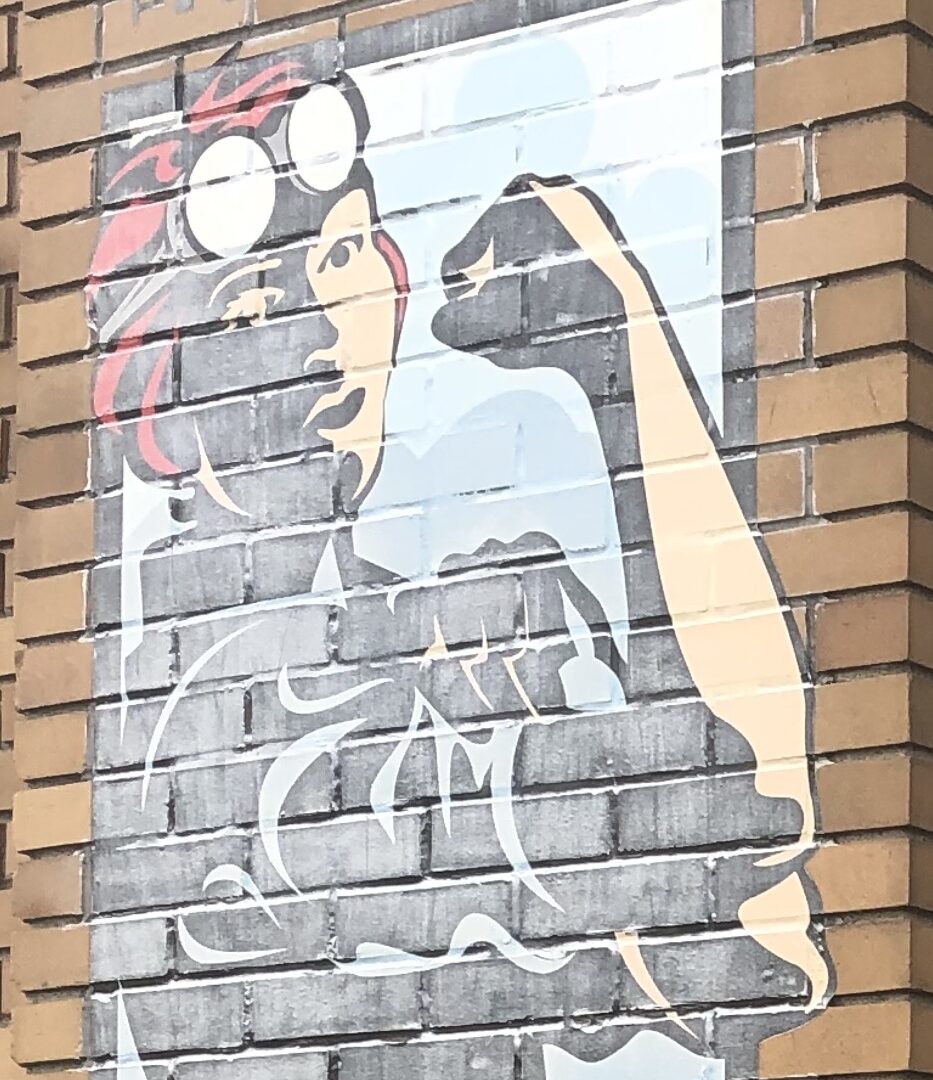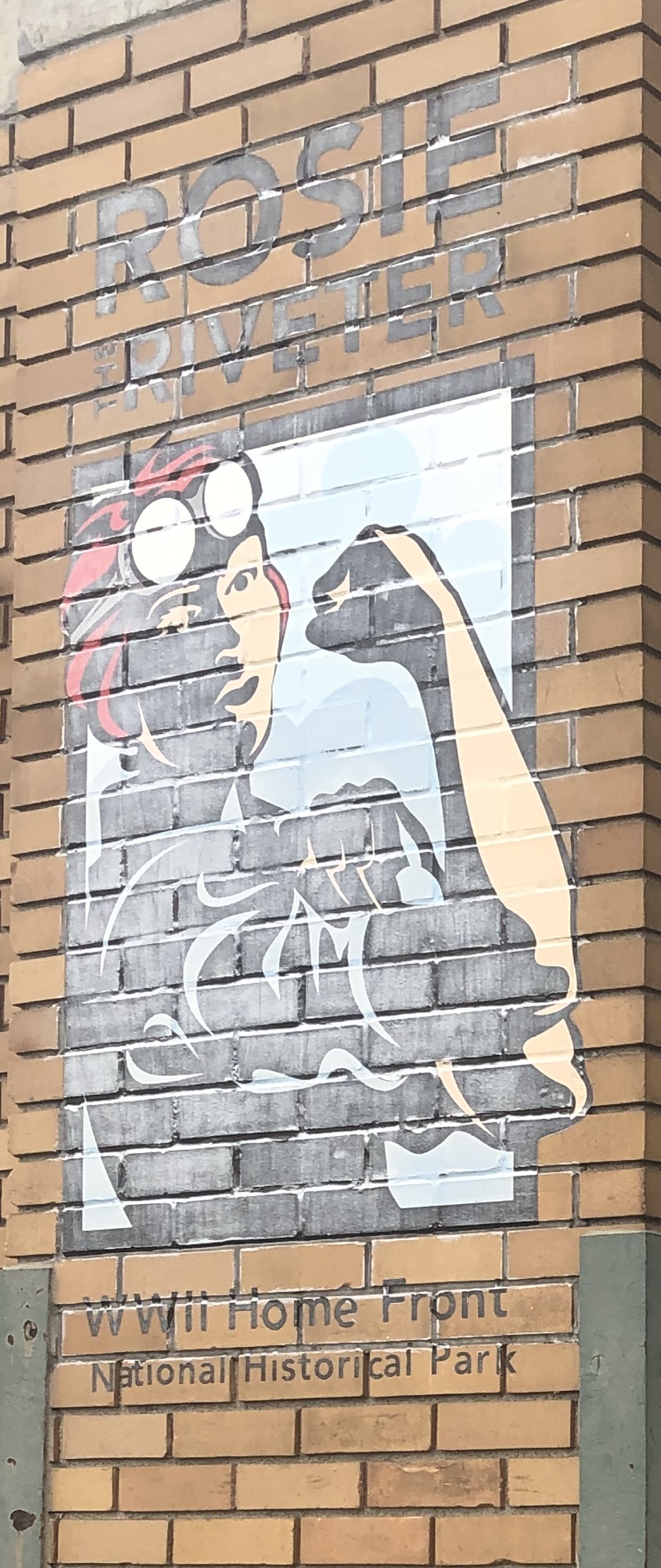Rosie the Riveter / World War II Home Front National Historical Park
We have all probably seen the images of Rosie the Riveter, a national symbol during World War II encouraging everyone to join the war effort. But Rosie the Riveter / World War II Home Front National Historical Park in Richmond, California, is about more than just women joining the work force when the men were away. The museum really paints a picture of what life was like after Pearl Harbor. War Bonds, Victory Gardens, recycling efforts, rationing, blackouts and shortages. America was the “home front”.
Richmond, California
Something we hadn’t thought about was the impact of the war effort on towns like Richmond that became the heart of the war effort. On request of the president, Henry Kaiser built four shipyards there with a goal of building hundreds of ships. And he needed people to do this. His call attracted thousands of workers from far and wide, including men and women of all races and ethnicities.
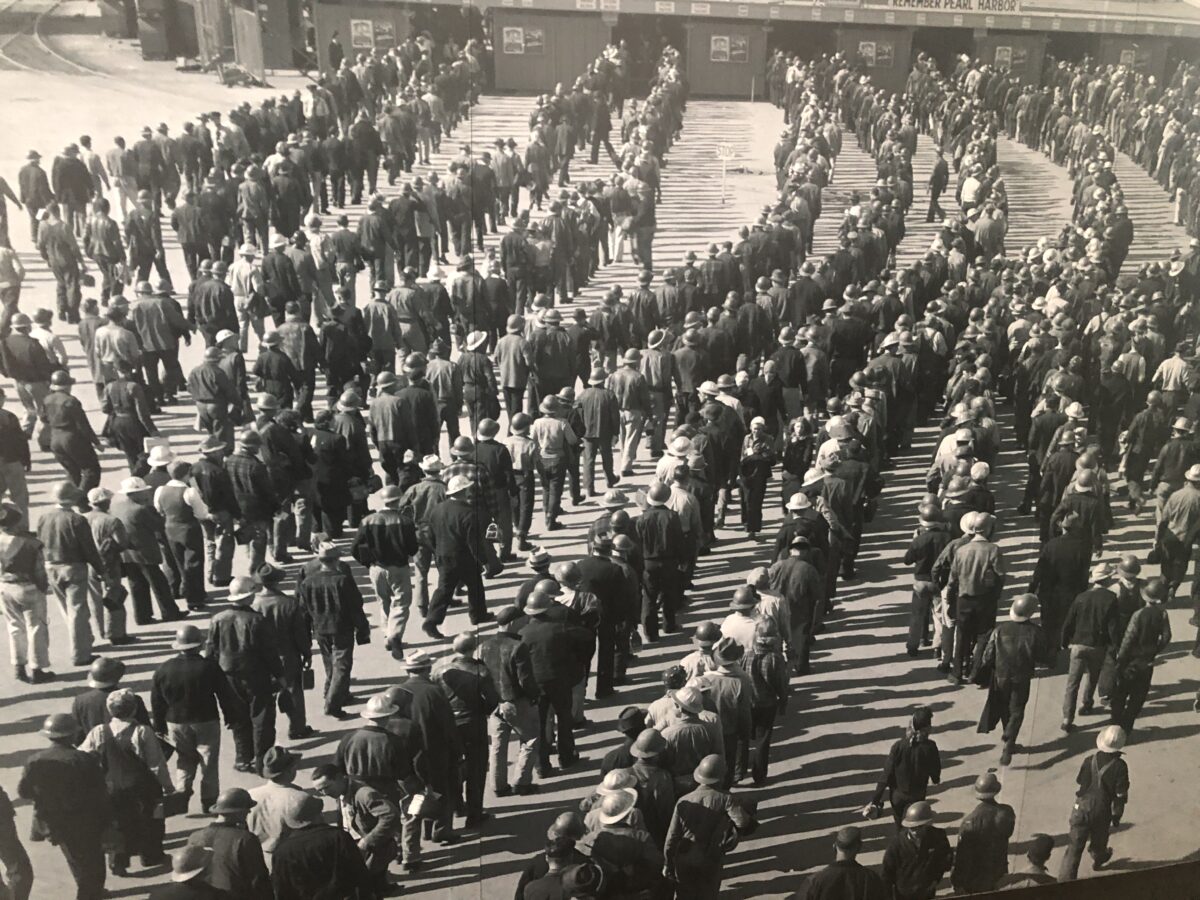
At its peak, Kaiser’s shipyards employed over 90,000 people. The sleepy little town of Richmond swelled overnight. Unfortunately the infrastructure was not prepared to handle this influx. Local grocery stores couldn’t keep up and there were not enough places for people to live. Photos in the museum show people living in their vehicles or in hastily built shacks. Some day shift workers slept in the all night movie theaters, while others shared beds with people working on another shift – so called “hot beds”. The company built some housing, but it was not enough and most of it went to whites.
This was certainly an aspect of the war that we had never really thought about.
Kaiser’s Innovations
Kaiser was an innovator in shipbuilding. Old methods to build ships simply could not build the number of ships he had been asked to build. After looking at what Ford did with the assembly line, Kaiser applied these concepts to shipbuilding – building components off site and then assembling them. In this way he managed to cut the time to build and launch a new ship from months or weeks, to just a matter of days.
By standardizing small repetitive tasks, he was also able to deploy a less-skilled workforce. Even though the unions objected, Kaiser was one of the first to employ women in factories. They were well suited to jobs like welding. In fact, one of the stories talked about how a supervisor could see which welds were done by a woman because they were so much more precise!
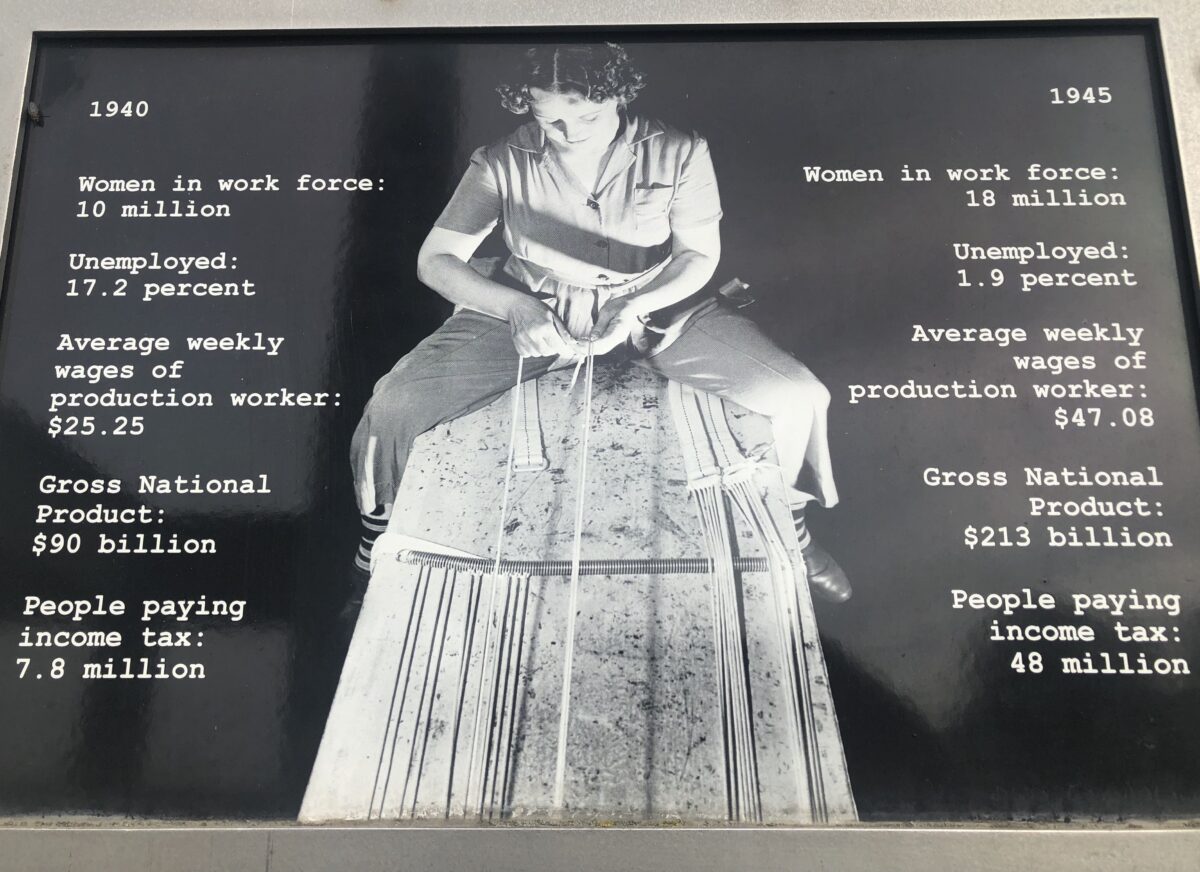
Women in the workplace put an added strain on infrastructure. We don’t really think about this today, but what were they to do with their kids? The concept of “day care” didn’t exist at the time, so working women had to come up with creative strategies to care for their children. Once again, Kaiser was a leader – working with the community to establish innovative day care centers.
Kaiser was also a leader in providing health care to his workers. Shipbuilding was dangerous work and most workers had no access to healthcare. In response, Kaiser set up first aid stations throughout the plants and provided health care insurance to their workers for a small fee. This became the company we know today – Kaiser Permanente.
Visiting the Park
We recommend that you start at the Visitor Education Center. There are several films and the exhibits are really interesting. All of the things we talked about are discussed here. They talk about Richmond; the changing workforce that included women and minorities; advances in day care and healthcare; and the shipbuilding process. We really enjoyed the photos and stories. They really brought to life many of the challenges and resulting societal changes.
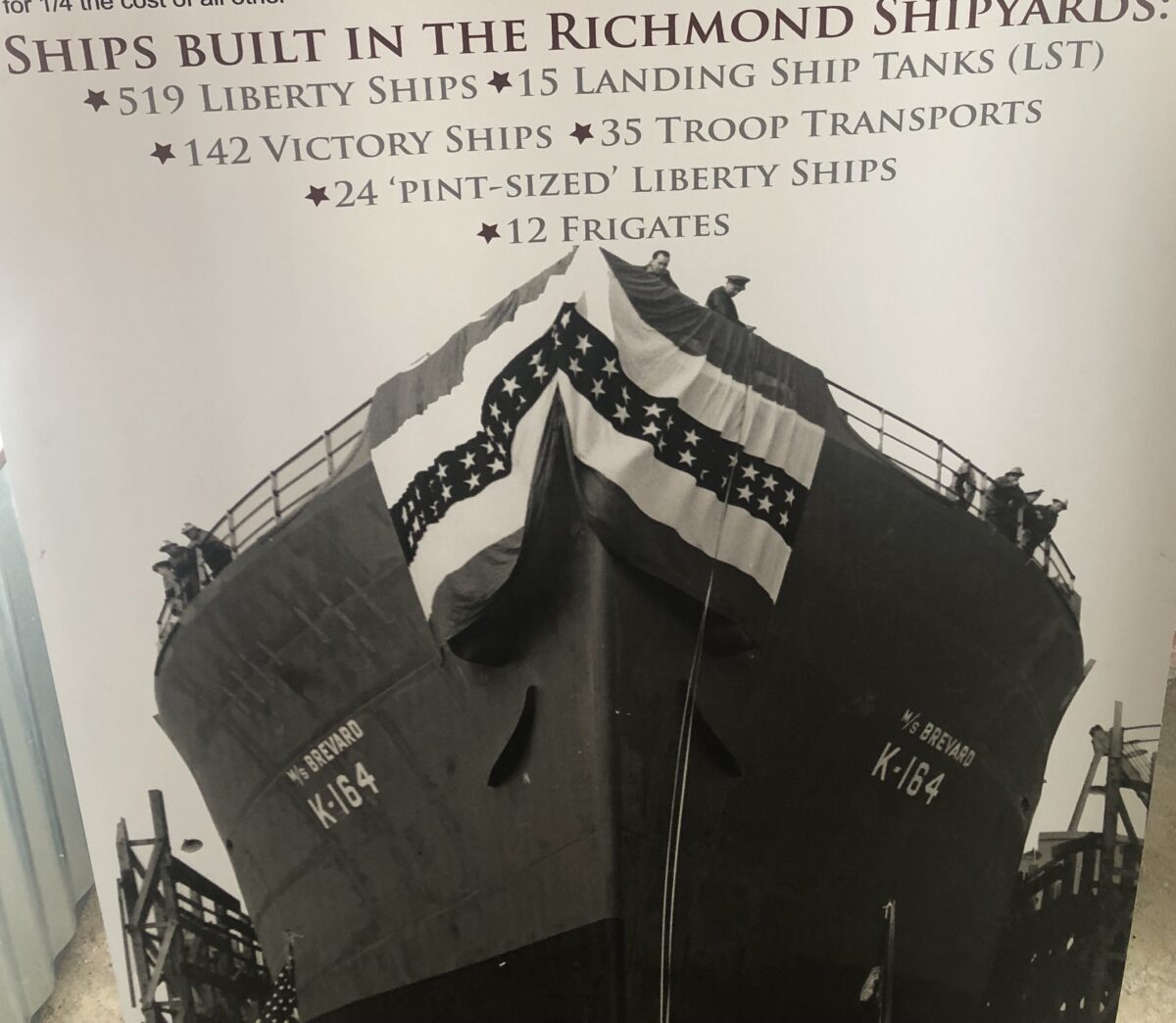
The Visitor Education Center is located on the Richmond waterfront in an old warehouse district, where many of the original buildings are still intact. Right next door to the visitor center is the old Ford assembly building that turned out tanks for the war effort.
Another of the old buildings houses the Columbia Sportswear Employee store. You can only shop there “by invitation” but when we were there, they had a relationship with Rosie the Riveter. Buy anything in the gift shop and you will get a pass to the store where you can get great discounts on Columbia Sportswear. Be sure to ask about this when you visit!
If you like to walk (as we do), you can walk along the Richmond Marina Bay Trail to the Rosie the Riveter Memorial about 1 mile away. It is a lovely walk along the bay with historical markers along the route. The memorial is on the site of one of the old shipbuilding locations and the sculpture depicts a ship under construction, covered with photos and quotes from women who worked there.
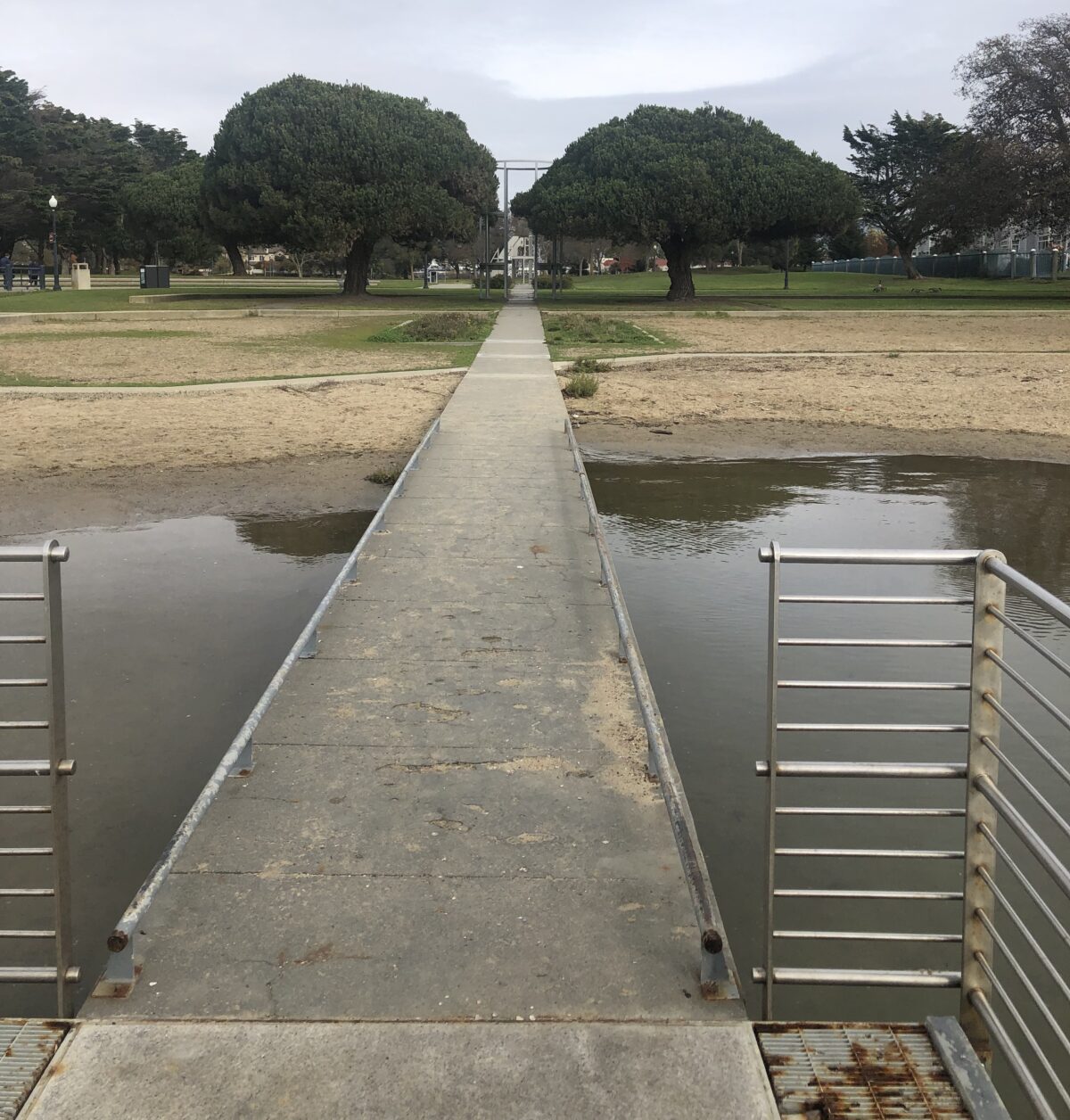
There is also a self-guided auto tour, including a visit to the SS Red Oak Victory ship – built in Richmond in 1944. It is pretty impressive, even from outside. Boarding the ship is restricted to certain dates and times. Check the website (www.ssredoakvictory.com) for information.
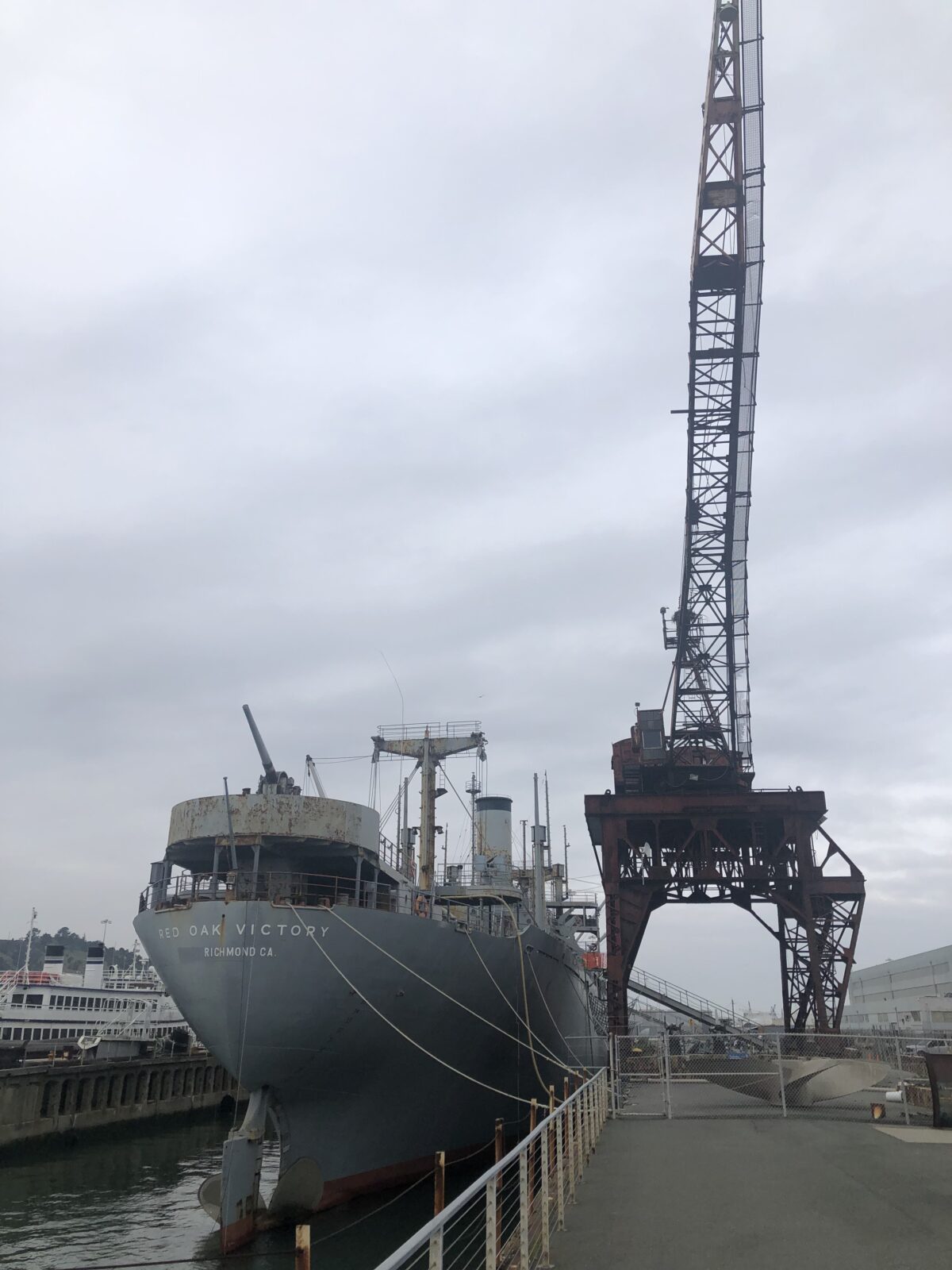
Be sure to allow at least 2 to 3 hours for your visit.
Other National Park Units Nearby
While you are in the area, plan to visit the other national park units nearby – Eugene O’Neill National Historic Site, John Muir National Historic Site and Port Chicago Naval Magazine National Memorial. All of these offer interesting insights into aspects of our history.
Need Help Planning Your Visits?
If you would like to explore this or other National Park Units, but need a bit help in the planning, please give us a call at (480) 609-3978. We are happy to offer customized trip planning.
#FindYourPark
#SeeAmericaFirst
